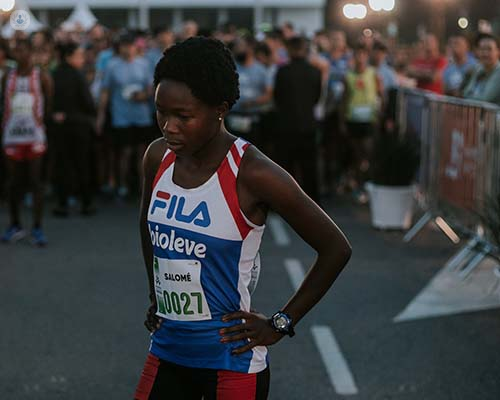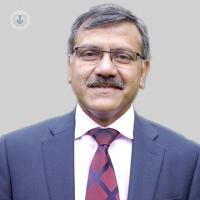Achilles tendinopathy: running through the pain
Autore:Achilles tendinopathy presents as painful swelling over the back of the heel. It can affect any sportsman but it is most common in runners due to the hard surface upon which they run leading to repetitive stress.
Here, leading orthopaedic surgeon Mr Abhijit Guha explains what happens if you ignore Achilles tendinopathy, whether it can improve by itself or whether it gets progressively worse.

What happens if Achilles tendinopathy is left untreated? Can it heal by itself?
Once the process has started and the healing process is not matching up to the rate of degeneration, unfortunately, the tendinopathy tends to progress. Most often people find swelling and stiffness, especially in the morning, but after a period of activity this resolves and they are able to get on with things, especially with running.
Is it possible to run through the pain of Achilles tendon? Is it risky?
Some people have tried to run through the pain and yes, they are able to do that, but they pay for it the next day when there is increased pain and swelling around the tendon. This means, therefore, that Achilles tendinopathy needs to be treated.
Read more on tendinopathy and running
How can I treat Achilles tendinopathy at home?
The first option of treatment should be rest and icing the tendon, and to stop the inciting sport for the time being. With physiotherapy and conditioning of the tendon, gradually restarting the sporting activity is recommended and at any point where the pain starts to come back, the level of sport should be downgraded again.
What happens if Achilles tendon does not improve?
If the pain and swelling do not subside with self-treatment, you need to get the help of a physiotherapist.
The mainstay of treatment of Achilles tendinopathy is definitely physiotherapy and eccentric stretching of the tendon, which works in about 70% of cases. Eccentric stretching done diligently will actually relieve the pain in about two-thirds of sufferers.
For those where the pain is not relieved from stretching, we move onto the surgical realms. Initially, it is non-invasive surgical means by either glyceryl trinitrate patches or shockwave therapy, which tend to work in both insertional and non-insertional Achilles tendinopathy.
Various minimally invasive procedures are also recommended following on from a non-invasive means. These include stripping of the paratenon through small incisions, making incisions into the tendon itself or tenotomies and the excision of the little plantaris tendon, which also contributes to the pain.
What are my surgical options?
Invasive surgical procedures can be done either making small incisions using a telescope or arthroscopic debridement of the tendon, and excision of the plantaris muscle. Failing that we move on to open surgery.
At open surgery, what is recommended is excision of the diseased bits of the tendon and repair of the tendon pack. Sometimes, if there is excessive bone at the back of the heel bone this needs to be excised and the tendon needs to be repaired securely back to it. Following any surgery on the back of the heel, there is always a chance of wound healing problems and also tendon rupture, so surgery should not be taken lightly.
What is the recovery time for Achilles tendinopathy?
This can be extremely variable. One thing to remember is that there is no overnight magic cure and that this is a chronic degenerative condition. It will, therefore, take time to resolve. Most people tend to get better with physiotherapy to start off with and then non-invasive and invasive means of treatment. It often takes a minimum of three to six months for you to start running again and, unless you are very unfortunate, by a year's time you should be back doing what you want to do.
Do not hesitate to book an appointment with Mr Guha if you're concerned that you may be experiencing Achilles tendinopathy.


